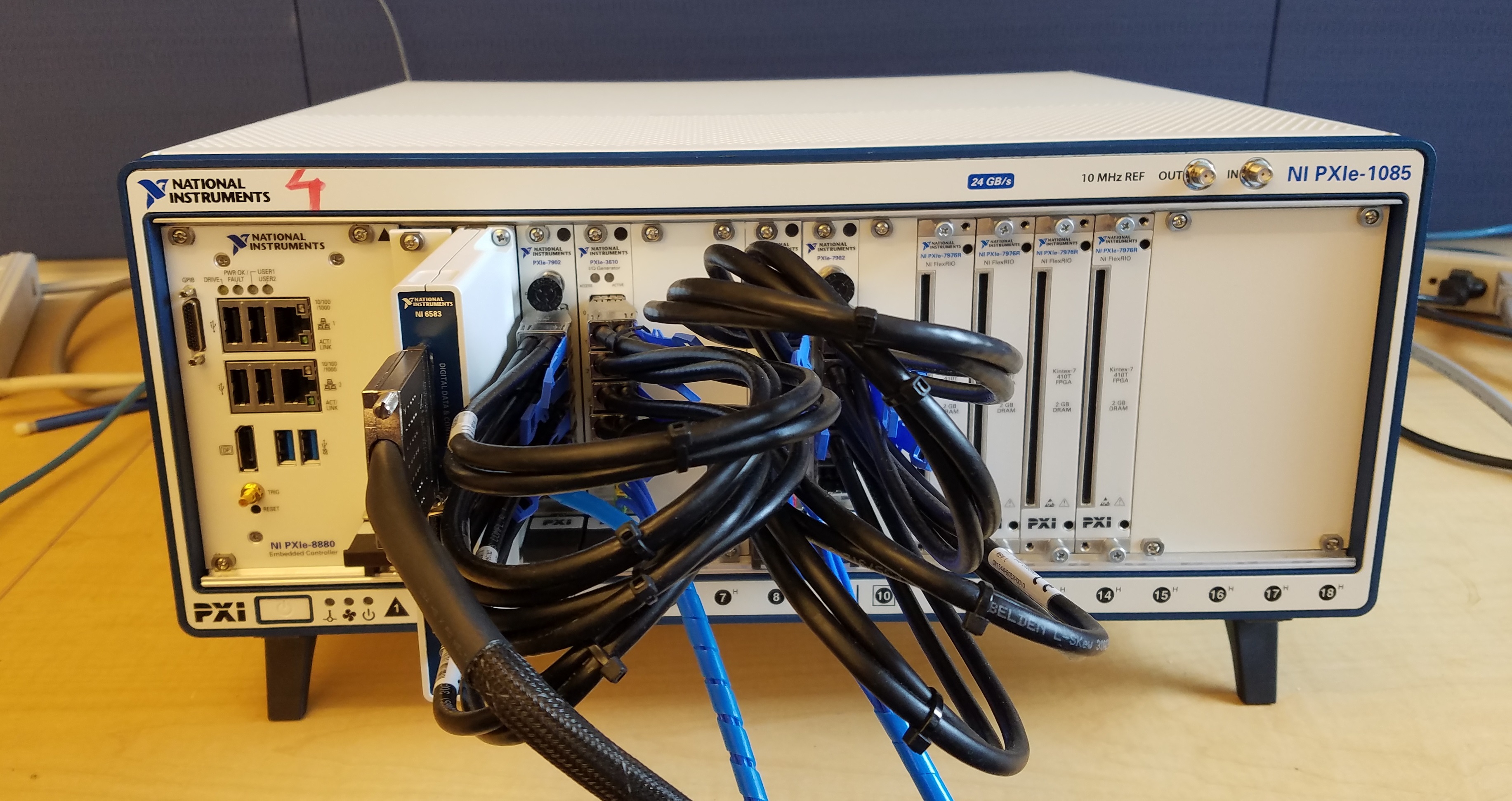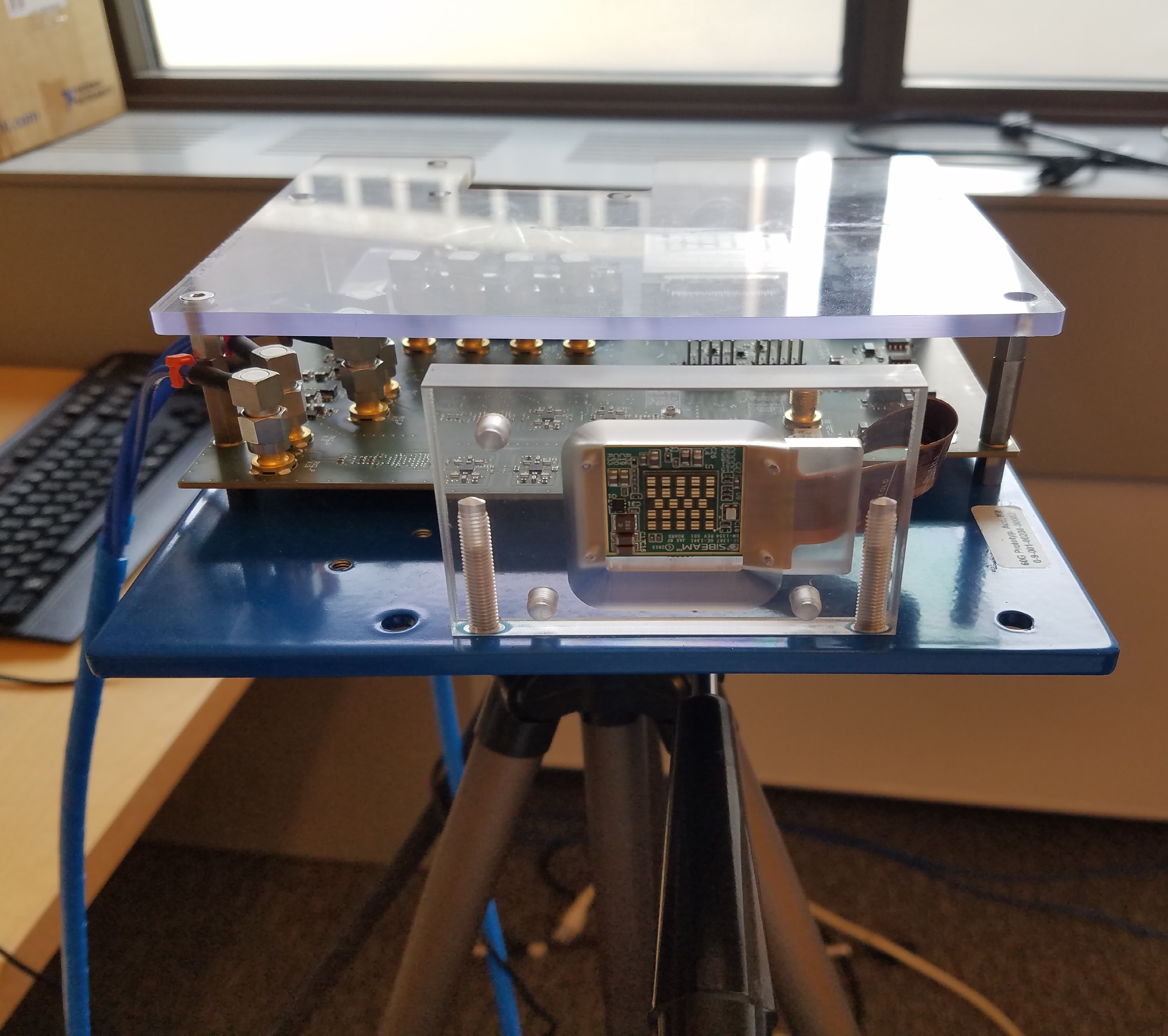X60: A Cross-Layer Reconfigurable Multi-Gigabit WLAN Testbed at 60 GHz
This NSF-funded project is building X60, the first software defined based 60 GHz testbed that offers high level of reconfigurability at the PHY, MAC, and network layers while
supporting channel widths and speeds commensurate to those of the 802.11ad standard. X60 consists of four nodes, each including an FPGA-based mmWave Transceiver System from NI and a
12-element phased antenna array from SiBeam that can be configured in real-time. A legacy 802.1ac radio has been added to each node that implements a reliable, out-of-band control channel.
Additionally, the project is developing reconfigurable 60 GHz reflector
arrays to enable a smart 60 GHz wireless channel, which can optimally control the propagation direction
and signal strength even after the 60 GHz signal is radiated out by the transmitter. Together with the beamforming/beamsteering at the 60 GHz transceivers, the reconfigurable 60 GHz reflector can truly maximize
the user capacity in complex and dynamic indoor environment with high density of users.
 |
 |
X60 offers a number of unique advantages over other experimental 60 GHz platforms: (i) The platform supports 2 GHz RF bandwidth, commensurate to 802.11ad, thus allowing for Gbps rates.
(ii) The 12-element phased antenna array and the accompanying software API that offers real-time control of the array characteristics (beamwidth, direction) by changing the antenna weights, allows us to implement and evaluate various beam
steering algorithms, unlike previous experimental works that used horn antennas to emulate beam steering. (iii) The use of FPGAs provides full flexibility and enables the implementation of a broader range of communication and networking
solutions, ranging from the current standard itself to radically new communication and networking solutions.
X60 will enable a number of research projects across multiple layers of the networking stack and will allow for joint PHY/MAC/network layer experimentation and prototyping towards our vision of multi-Gigabit, always-on WLANs. The offered channel widths and speeds commensurate to those of 802.11ad will allow us to evaluate realistically 802.11ad mechanisms (e.g., beam steering, rate adaptation) that have only been evaluated through simulations or via extrapolation from signal strength measurements, understand their limitations, and propose alternatives.
